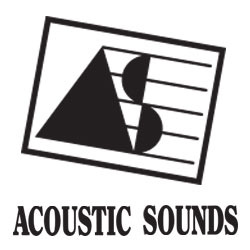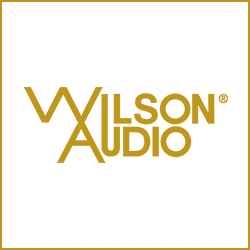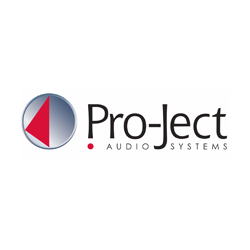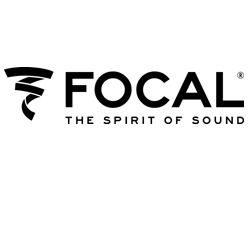ONKYO DEFIES OBSOLESCENCE
Recognizing that, in our “fast-paced world of digital, where any product you buy is half obsolete when it leaves the store and fully obsolete by the time you unpack it,” Onkyo has launched what it describes as a “Future-Proof” A/V receiver. The TX-DS989 home theater receiver starts out with the ability to decode every U.S. (and European) multichannel standard, including Dolby Digital, DTS, MPEG and THX Surround EX, the latter qualifying it as “the worldπs first 7.1-channel Surround EX receiver”. Moreover, the new Onkyo will handle any future formats because its decoders are software-upgradeable through its bi-directional RS232 port.
Onkyo points out that the updates will cover more than just decoding standards: today’s consumers need to prepare for DVD-Audio and SACD processing, new DSP algorithms, and software for a possible IEEE-1394 interface. According to Sergio Batista, Onkyo’s national product manager, “This technology is the best answer to consumer complaints that modern products can become obsolete overnight. Now, just install the new software, and it is like getting a new component.” Onkyo will notify registered owners as new upgrade applications become available, although initially, software upgrades will be handled by authorized Onkyo service centers. If the upgrade procedures prove to be consumer-friendly, the company will make them available on the Onkyo web site.
Anticipating the new formats, Onkyo fitted the TX-DS989 with 24-bit, 192-kHz D/A converters, ready for DVD-Audio and SACD, with space on the front panel for the IEEE-1394 interface. A 7.1-channel input connector allows easy connection of any conceivable multichannel decoder or signal source, while its component-video outputs and inputs and video switching with response out to 40 MHz can handle advanced video equipment including HDTV. The supplied remote control can learn the codes of infrared remotes even for components not yet available.
Other indications of the TX-DS989’s flexibility include audio and video outputs and switching for multiroom/multisource operation, while the RS232 port can interface with touch-screen and home-automation controllers from AMX/Phast, Crestron, and others. The TX-DS989’s amplifier section provides 130 watts to each of its seven channels, while line-level outputs are provided to enable the use of larger external amplifiers. Bass addicts will approve of the TX-DS989’s two line-level subwoofer outputs, and a loop facility allows the use of equalizers or other signal processors in all three front channels, while its array of inputs includes five coaxial and three optical digital inputs, an RF input for AC-3 signals from laserdisc players, analog connections for four video sources, two video recorders, two audio recorders, two audio sources, and – unusually in this day and age – an RIAA phono input, “because Onkyo understands that preparing for the future should not rule out the best of the past.” Price is $3,200.
Onkyo also announced a selection of suitable source components to mate with the TX-DS989, including DVD players with 10-bit video DACs, 96kHz/24-bit audio DACs, and black-level control but minus on-board Dolby Digital and DTS 5.1 decoding. The DVD lineup will start with a $299 model up to a DVD-A/V model selling for $1,699 to $1,899. This model, which will include progressive-scan outputs, should be available at the end of the summer, depending on DVD Forum approval of a new DVD-Audio encryption standard.
Onkyo USA Corporation, 200 Williams Drive, Ramsey, NJ 07446
(201) 825-7950
www.onkyousa.com
MARANTZ LAUNCHES HIGH END SACD PLAYER
At a press conference in Manhattan in mid-May, concurrent with a massive European conference, Marantz announced it will begin shipping its Reference Series SA-1 Super Audio Compact Disc (SACD). With a suggested retail price of $7500, it’s clearly aimed at audiophiles not afraid to commit to an all-new format. Marantz demonstrated the new player with excerpts from SACD discs by electric bluesman Sam McClain (an audiophile favorite with discs on AudioQuest and JVC’s XRCD label) and crossover jazz guitarist Lee Ritenour (also famed in audiophile circles for a series of vinyl LPs in the late 1970s). Because all SACD players are backward compatible with conventional CDs, and the new dual-layer SACD discs are playable in conventional CD players, the gamble is actually minimized. At the very worst, should SACD not succeed, the player will still be able to access the many tens of thousands of CD titles already available.
The SA-1 is classically “Marantz” in that it’s finished in the same champagne gold which has marked the range for almost 50 years, while its round central display is illuminated in the company’s trademark blue. Featuring separate dual-differential DAC-7 convertors for each channel, custom-made components, balanced outputs and both optical and coaxial digital outputs, the SA-1 is clearly another no-compromise effort from the venerable firm.
Marantz also introduced a number of other products, emphasizing both a commitment to pure audio and further developments in its life-style ranges. Of particular interest to the lucky few who will acquire an SA-1 are the Reference Series PM-17SA stereo integrated amplifier ($1299.99) and the SM-17SA ($999.99 list) stereo power amplifier, conceived as separates with the specific role of exploiting the sonic possibilities of the SACD format. The PM-17SA is a high current design that delivers 60 watts per channel into 8 ohms, while the 60-watt-per-channel SM-17SA can be bridged to deliver 200 watts, mono into 8 ohms. The two amps can be used together as an integrated, multi-channel system.
Marantz America Inc, 440 Medinah Road, Roselle, IL 60172-2330
(630) 307-3108
www.marantzamerica.com
NXT CREATES VIRTUAL ORCHESTRA
A musician’s nightmare but “a conductors dream – an orchestra made up of members that have no egos, always play in tune, never talk back and are always right on time for rehearsals!” That’s how NXT announced a breakthrough called the “Virtual Orchestra”, developed by Dr. David B. Smith, Professor of Sound Technology at New York Technical College and Dr. Fred Bianchi of Worcester Polytechnic Institute.
Utilizing NXT flat-panel loudspeakers and a sophisticated new audio process to revolutionize the sound of theatrical performances, the Virtual Orchestra utilizes an array of 23 separate loudspeakers positioned in the orchestra pit as real musicians would be, with each loudspeaker assigned to reproduce just a single instrument and fed by a computer-controlled multi-channel system of sound modules containing extremely high-resolution sampled sounds of real instruments. The trick is that each ersatz musician can be “conducted” by the musical director, who can influence tempos, musical interludes, and other changes “to accommodate the natural flow and expressiveness of the singers, musicians and the realities of the performance itself.” Er, quite.
NXT flat-panel loudspeakers are used because, unlike conventional loudspeakers which produce sound in a narrow “beam” with limited acoustic coverage, NXT panels radiate sound in an omni-directional (360-degree) pattern, duplicating the manner in which real sound is dispersed.
Alarmingly, the Virtual Orchestra and NXT boast that the technology will “provide significant economic and practical advantages compared to the cost of hiring a live orchestra.” Those of you who remember the spate of drummer jokes which emerged after drum machines became viable in popular music will see the implications: live music abandoned in favor of recordings. The pitch goes on to point out that, “Space, budget and location restrictions are no longer obstacles in enabling audiences to enjoy the full score of a musical exactly the way the composer intended. The Virtual Orchestra allows local and regional companies and smaller theatres to deliver the musical quality and excitement of a full Broadway production to their audiences.”
Er, isn’t that what a good hi-fi system has been doing ever since stereo allowed recorded music to recreate a sense of space? Maybe NXT and Virtual Orchestra think that people will be prepared to pay concert ticket prices to hear what by any other definition is merely a recorded event. We think the Musicians’ Union should be told…
New Transducers Ltd, 37 Ixworth Place, London SW3 3QH, England
011 44 20 7343 5050
www.nxtsound.com
NEWS IN BRIEF:
GETPLUGGED.COM ADDS BRANDS
Online specialty consumer electronics site GetPlugged.com has announced that TAG McLaren Audio, Inc. USA, Meridian, and Velodyne have authorized their dealers to display product on www.GetPlugged.com, in compliance with their current dealer agreements. The site has emerged as a popular method for audio and A/V consumers to browse on-line. Also announced are a new Dealer Locator Map and an English-to-Spanish translator.
SONANCE ANNOUNCES SUB
Sonance has released a new subwoofer, called, simply, The Sub. This freestanding unit is THX Select-certified and designed to match the company’s in-wall speaker products. The Sub contains a 12in dual-voice coil woofer in a 15x19x19in enclosure, with onboard 150W power amplifier and front-mounted crossover, phase and level controls. It operates over a range of 30-150Hz.
Sonance, 212 Avenida Fabricante, San Clemente, CA 92672
(949) 492-7777
www.sonance.com
HERE WE GO AGAIN…
Like alchemists still hoping to turn lead into gold, the quest continues for an “all-digital amplifier”, the latest coming from a company with its sights set first on (where else?) the computer industry. Billed as “The First New Amplifier In 20 Years”, Boston-based JAM Technologies’ REVA (Rail-Exceeding Variable Amplitude) True Fidelity amplifier is aimed firstly at the better PC manufacturers for inclusion in computers to improve their fundamentally execrable sound, but the company has its sights set on pure audio as well. The amplifier uses no transformers or DC/DC converters, can produce 25W/ch into 8 ohms using only a 5V supply, or 250W using a 12V power supply; it’s said to be 80-90 percent efficient. When interviewed by PC guru John Dvorak, the designers did not discount the possibility that the REVA could be tweaked to emulate the sound of tubes, “once you’re in the digital realm.” According to JAM, most importantly REVA will bring high-end audio sound to PCs.
www.jam-tech.com
(Gramophone, US/Japan editions, August 2000)






















